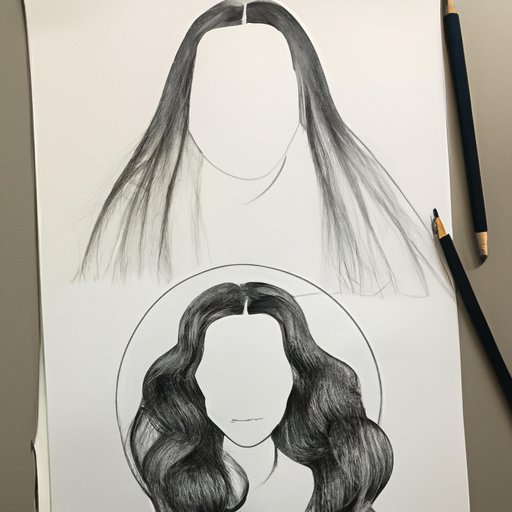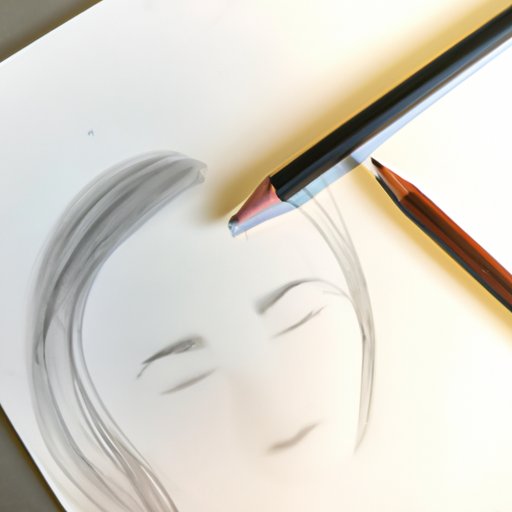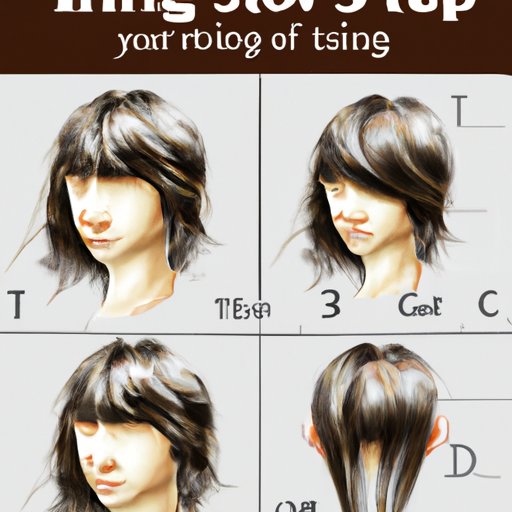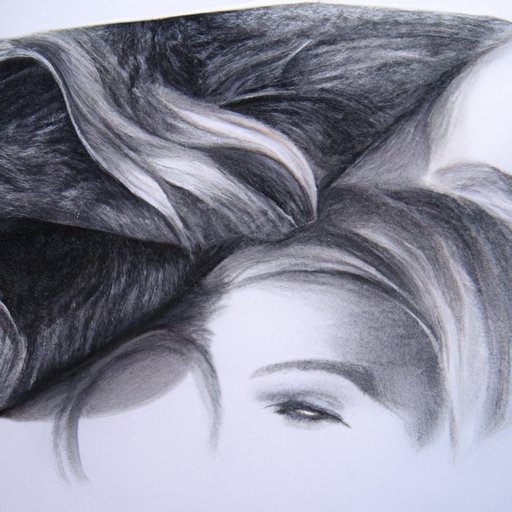Introduction
Drawing realistic hair can be a challenging task for many artists. It takes skill, patience and practice to create a believable and lifelike look. But with the right guidance, anyone can learn to draw realistic hair.
Realistic hair is defined as hair that looks as close to real life as possible. It should have realistic texture, highlights, shadows and movement. It should also be drawn in proportion to the head and face, and take into account perspective.
Beginner’s Guide: How to Draw Realistic Hair Step-by-Step
The first step to mastering the art of drawing realistic hair is choosing the right tools. Graphite pencils, charcoal, and erasers are all necessary for creating the desired look. You may also want to use blending tools such as tortillions, or a stump, to help blend the pencil and charcoal strokes together.
Once you have the right tools, it’s time to begin sketching out the basic shape of the hair. Start by lightly sketching the shape of the head and face. Then, draw the outline of the hair, keeping in mind the direction it will flow. Once you have the basic shape down, you can start adding detail with pencils and charcoal.
When adding detail, focus on the individual hairs. Use light strokes to draw the individual hairs and darker strokes to indicate shadows and highlights. Try to create a sense of movement by varying the length and direction of the strokes. Also, don’t be afraid to experiment with different textures. This could mean using cross-hatching to create a more textured look, or stippling to create a softer look.

Achieving a Realistic Look in Your Hair Drawings
Creating shadows and highlights is one of the key elements to achieving a realistic look in your drawings. Pay attention to where the light is coming from and how it reflects off the hair. Make sure to add darker areas to create depth and lighter areas to create highlights. Experiment with different tones and values to create a natural look.
Another important element to consider is texture. Hair comes in many different textures, from straight and sleek to curly and wavy. Take some time to study the hair type you’re drawing and try to replicate the texture as accurately as possible. For example, if you are drawing curly hair, use short lines to indicate the curls and longer lines for the shadows.
Finally, adding color can enhance the realism of your drawings. Colored pencils or watercolor paints are great for this. Choose colors that complement the overall look and feel of the drawing. Be mindful of how the colors interact with the shadows and highlights to create a more realistic look.

Mastering the Art of Drawing Realistic Hair
Mastering the art of drawing realistic hair requires dedication and practice. Developing a personal style is important, as it will make your drawings unique and recognizable. Experiment with different tools and techniques and find what works best for you.
Patience is also key when learning how to draw realistic hair. Don’t get discouraged if your drawings don’t turn out the way you want them to. Keep practicing and studying other artists’ work to gain inspiration and new ideas.
Finally, referencing other artists is a great way to improve your skills. Look for tutorials online or seek out local classes to learn from experienced artists. This will give you a better understanding of the techniques used to create realistic hair.

Tips and Techniques for Drawing Realistic Hair
Here are some tips and techniques for drawing realistic hair:
- Start with simple shapes – draw circles, ovals, and triangles to help create the basic shape of the hair.
- Pay attention to the direction – draw the individual hairs in the same direction as the overall flow of the hair.
- Use reference materials – look at photos or videos of people with similar hair types to get an idea of how the hair should look.
The Essential Elements of Drawing Realistic Hair
In order to create realistic hair drawings, there are three essential elements to keep in mind: perspective, proportions, and texture.
Perspective is important because it will help create the illusion of depth in your drawings. Pay attention to the angles and distances between the individual hairs, as well as the distance between the hair and the head and face.
Proportions are also important. Make sure the hair is in proportion to the head and face, and that the individual hairs are drawn in the correct size relative to each other.
Finally, texture is essential for creating realistic hair drawings. Spend some time studying the hair type you’re drawing and use pencils, charcoal, and blending tools to replicate the texture as accurately as possible.
Conclusion
Drawing realistic hair can be a daunting task, but with dedication and practice, anyone can master the art. Start by choosing the right tools, then sketch out the basic shape of the hair. Add detail with pencils and charcoal, and use shadows and highlights to create a realistic look. Finally, pay attention to the essential elements of perspective, proportions and texture to finish off the look.
With the right guidance and a lot of patience, you’ll soon be able to create beautiful and lifelike hair drawings.


